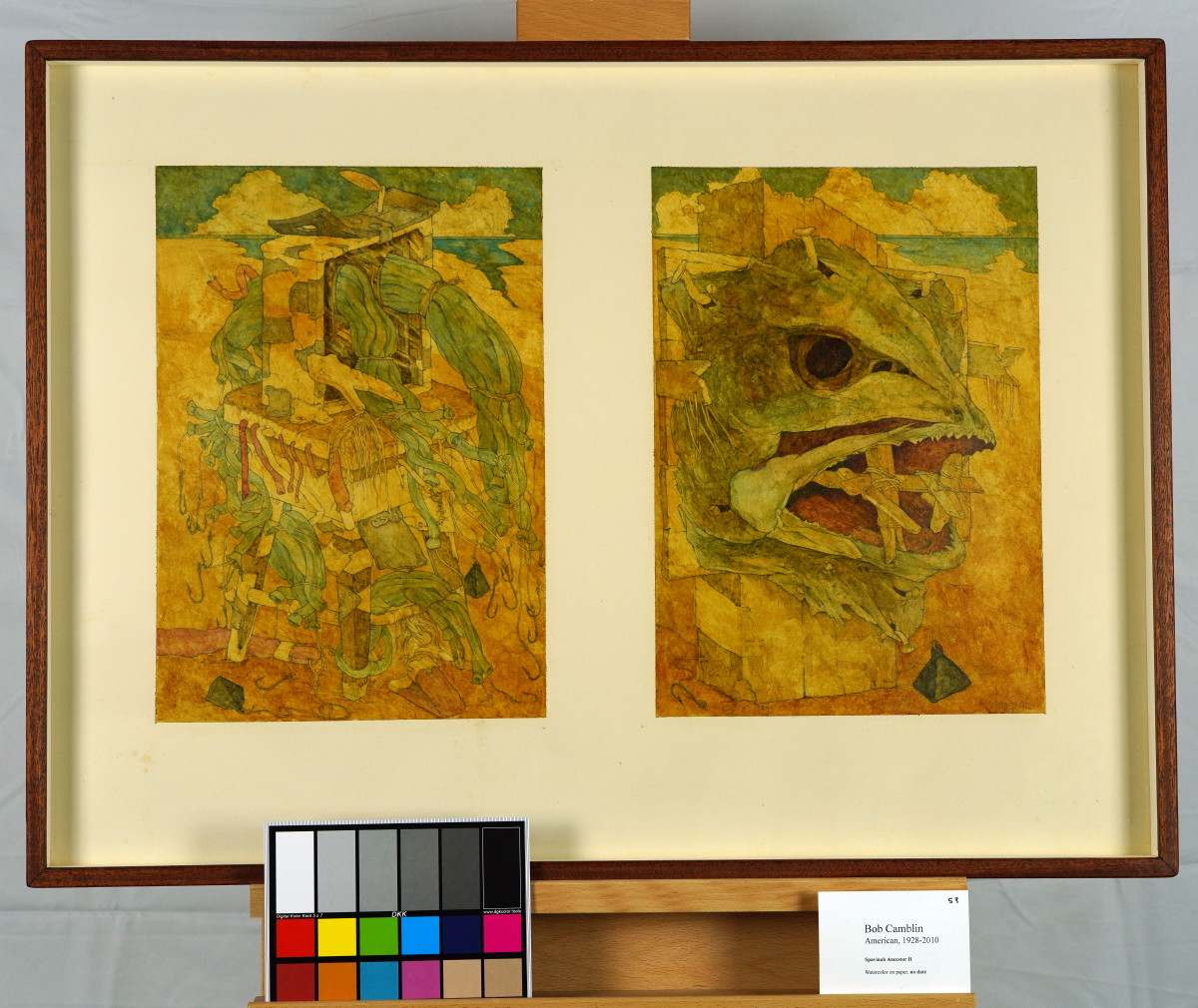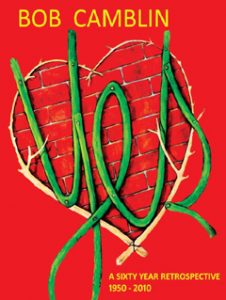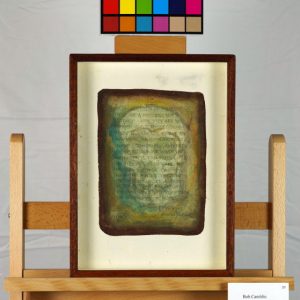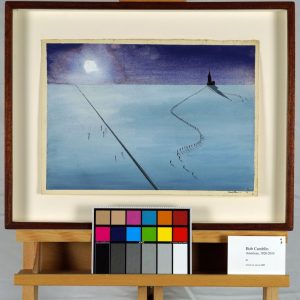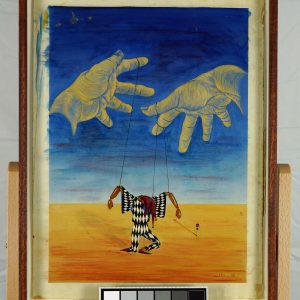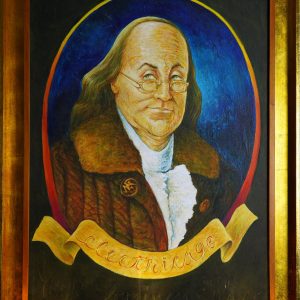Description
Spavinah Ancestor II, 1990Watercolor
Signed
15 x 24 in. (image)
22.5 x 30.75 (frame)
original, includes certificate of authenticity from ArtTrust
The painting “Spavinaw Ancestor II” consists of two distinct panels that portray a surreal scene. On the left is a tangled mass of objects and organic forms, such as cables, ropes, and plant-like appendages, intertwined with mechanical components. The right panel features a large, decaying catfish skull that appears fossilized or ancient. The background depicts a barren, sandy landscape with an ocean horizon, creating a juxtaposition between the decaying remnants and the natural environment.
The composition invites contemplation on the transient nature of all things. The decayed and tubed, and lead-lined box with chair and its chaotic mass in the left panel symbolize impermanence, suggesting that all life forms, even the seemingly enduring, eventually return to nature. In Zen philosophy, this could represent the idea of “mujo” (impermanence), where the natural state of existence is one of continual flux. By illustrating decay alongside elements that could be viewed as life or growth, the artwork emphasizes that death is merely a stage within a broader cycle.
The scene can be connected to the Hexagram “Yi” (䷧), which represents transformation and replenishment. In the I Ching, Yi reflects the process of decay that ultimately leads to renewal. The decaying skull and the disordered collection of objects in the right panel hint at the breakdown of existing structures, which makes way for new growth. It conveys that through the cycle of life and death, decay serves a purpose in nourishing the next phase.
The artwork’s contrasting panels symbolize a dialogue between the natural cycle of life and the man-made world. The fish skull, evocative of natural decay, represents the inevitable decline in nature. The left panel’s tangled objects suggest human interventions, remnants of technological progress, or industrial decay, blending life’s organic chaos with the rigid constructs of human invention. Together, these elements serve as a meditation on entropy and rebirth, illustrating how life evolves through destruction.
The piece reflects elements of surrealism and symbolism, combining detailed textures with abstract forms. The portrayal of decay, mechanical parts, and organic matter shares visual similarities with the works of Max Ernst or Salvador Dalí, who used decaying objects to symbolize the subconscious or time’s ravages. The left panel’s mechanical components evoke the “machine aesthetic” often found in 20th-century art, where technology’s relationship with nature was explored. Additionally, the desert landscape and skeletal remains reference vanitas themes from historical still-life paintings, where decaying objects were used to symbolize the futility of material pursuits.
*Shipping cost will vary, please inquire at sales@camblingallery.com before purchasing.
Currently ships from Oregon, USA
Member of artnet? Apply for a discount! Inquire about intergallery and permanent loans for museums.
“Spavinah Ancestor II” was featured in his Yes Retrospective
Reproductions of this drawing are available in multiple sizes!
Click here to use our high-resolution viewer!
This artwork is available with a non-fungible token to ensure traceability and transparency of provenance.
The royalty factor – Unlike traditional artworks, such as paintings, mosaics, statues, and the like, NFTs can be programmed to provide royalties to you every time the painting (and token) is sold and resold – for eternity. That mind-bending Camblin you sold could be worth millions one day and provide income for your great-great-great grandkids!
Anti-forgery – The central idea underpinning NFTs is that they are built on the blockchain, which is meant to offer advanced security. Think of it like an un-erasable and un-avoidable copyright.
Easy authentication – Another compelling aspect of NFT art and NFTs in general is the ability to quickly and easily authenticate items, as the record of ownership is scrupulously kept on the blockchain.
